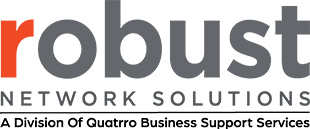Remember when cloud technology was first starting to take off? Now it’s high in the stratosphere, offering an array of computing and business infrastructure solutions. Along with the growth of cloud solutions has come a range of creative options when it comes to putting cloud infrastructure to work for your organization.
This is where multi-cloud and hybrid strategies are worth considering as you explore your computing options. Here’s what each technique involves and some multi-cloud/hybrid strategies you can start implementing in the short term.
What Is Multi-Cloud?
Multi-cloud refers to using multiple cloud service providers to help your business meet its objectives. Specifically, a multi-cloud approach focuses on using more than one cloud-based platform, such as Amazon Web Services (AWS), Microsoft Azure, or Google Cloud Platform (GCP).
It’s also possible to use a multi-cloud strategy using your own cloud resources. This would involve your company setting up or renting more than one data center and using them in either redundant or complementary ways.
What Is a Hybrid Cloud?
When using a hybrid cloud strategy, you’re incorporating a combination of public and private cloud infrastructure.
What Is a Private Cloud?
A private cloud infrastructure is one that only your business uses. It comes in several forms. For example, you can set up your private cloud infrastructure using a data center you establish on your company’s campus. You can also rent out private cloud space, which gives you dedicated access to cloud resources. Some companies also set up a remote data center and establish private cloud resources within that environment.
What Is a Public Cloud?
The public cloud refers to a cloud computing environment that another party owns and operates. When using a public cloud, you’re sharing resources with other users. Often, public cloud infrastructure has a similar feel to that of a private one because you can rent out public cloud space that your company has exclusive access to.
Multi-cloud Strategies
With a multi-cloud strategy, you can get the best of several worlds thanks to combining different resources and types of service.
Mitigating Risk
If one cloud provider has problems and they host a business-critical function, you could end up in a tough position. But by using a multi-cloud strategy, you can either duplicate a work environment in another cloud or at least make sure that your business is never completely paralyzed by a single outage.
Cost Optimization
Another effective method of using a multi-cloud strategy is cost optimization. Each cloud provider has its own pricing structure, benefits, and service level agreements. So you may be able to get more bang for your buck with one cloud provider than another for the same service.
Avoiding Getting Locked into a Single Provider
Also, some businesses use a multi-cloud strategy to avoid getting trapped with a single provider. If a provider runs into financial trouble, for example, the ripple effect could impact how much you pay.
Or a cloud provider may change its security system, revamp its customer service methodology, or make another decision that makes you want to look elsewhere. When you only have some of your processes hosted by that company, it’s much easier to shift to another provider.
Hybrid Cloud Strategies
Hybrid cloud computing gives you a combination of flexibility and security that can be hard to mimic with a straight private or public cloud environment.
Data Management
For example, you may choose to use a hybrid cloud setup to achieve more effective data management. For instance, a manufacturer may want to use a public cloud for its customer relationship management (CRM) system and a private, on-premise cloud system for the data its factory Internet of Things (IoT) devices depend on. In this way, the company has control over how it gets real-time data to its IoT devices but an easily expandable public cloud for its CRM.
Computational Flexibility
A hybrid cloud ecosystem is also an effective way to manage sudden increases in computational demand. For instance, if a computer engineering company has to run a battery of test scenarios to ensure the viability of multiple products, the IT team may need more power than it has on-premise. If so, it could shift some of its computing to a cloud environment.
For example, team members could test one software on-premise and another in a cloud environment. In this way, you enable parallel testing, which saves time when compared to testing one solution at a time.
Business Resiliency
A hybrid cloud system is a popular option for companies that want to enhance resiliency because you’re not putting all your eggs in one basket. If one cloud resource fails, for example, you can have a parallel system in another cloud environment take over. This could involve running the same software in an on-premise and public cloud, making sure you use regular updates to ensure they have the same data.
One of the most popular uses of a hybrid cloud is for backing up data important to your business or its customers. By backing up data in a public cloud, you get the flexibility you need to add more storage or processing power anytime you want. This could be more difficult—and costly—if you backed up all of your data in an on-premise data center.
Robust Networks’ IT consulting providers understand the best ways to leverage cloud technologies to fit your business’s needs. Not only can you use Robust Networks IT consulting to design your cloud infrastructure, but you can also partner with Robust to decide which network solutions you should consider. Connect with Robust Networks today to see the possibilities.

